Forums
- Forums
- Duggy's Reference Hangar
- USAAF / USN Library
- North American NA-40
North American NA-40
Post a reply
- Go to Previous topic
- Go to Next topic
- Go to Welcome
- Go to Introduce Yourself
- Go to General Discussion
- Go to Screenshots, Images and Videos
- Go to Off topic
- Go to Works in Progress
- Go to Skinning Tips / Tutorials
- Go to Skin Requests
- Go to IJAAF Library
- Go to Luftwaffe Library
- Go to RAF Library
- Go to USAAF / USN Library
- Go to Misc Library
- Go to The Ops Room
- Go to Made in Germany
- Go to Campaigns and Missions
- Go to Works in Progress
- Go to Juri's Air-Raid Shelter
- Go to Campaigns and Missions
- Go to Works in Progress
- Go to Skinpacks
- Go to External Projects Discussion
- Go to Books & Resources
-
11 years ago
 Main AdminText from Joe BaugherThanks
Main AdminText from Joe BaugherThanks
The North American B-25 Mitchell is rated by most as being the best all-round light-medium bomber of World War 2. It was operationally efficient, docile, adaptable, and had an excellent all-round performance and particularly good handling characteristics. A total of 9816 Mitchells were built, greater than any other American twin-engined bomber. It served with the United States Army Air Forces (USAAF) on virtually all fronts during the War, and it also served in significant numbers with the United States Navy. It was also an important component of Lend-Lease, being supplied in large numbers to the Royal Air Force, the Soviet Union, Holland, Australia, and Brazil.
The B-25 is one of the few American military aircraft to have been named for a person. The aircraft carries the name of Colonel William C. "Billy" Mitchell (1879-1936), an Army officer of the early 1920s who had been the assistant Chief of the Army Air Service. He was court-martialed for insubordination in 1925 as a result of his outspoken views on the future of air power. His views were ultimately vindicated, and he was posthumously promoted to Bragidier General.
Even if the Mitchell bomber had never done anything else in its career, it would have achieved immortality for its most famous mission, the Doolittle Raid on Japan in 1942.
After the war, the Mitchell soldiered on in training roles with the USAF for many years, the last example not being retired until 1959. They served with other air forces even longer, remaining flying into the late 1970s with some Latin American air forces. A number of Mitchells are still flying today on the international air show circuit.
The origin of the B-25 Mitchell can be traced back to 1937, when the Army's Materiel Division began to investigate the possibility of the development of a twin-engined attack bomber with a performance that would greatly exceed that of the single-engined types that were currently in service. In March 1938, the Air Corps issued Circular Proposal Number 38-385 that defined the requirements. Payload was to be 1200 pounds, and range was to be 1200 miles at speeds greater than 200 mph.
Proposals were submitted by Bell, Boeing-Stearman, Douglas, Martin, and North American. Bell's Model 9 proposal called for an aircraft powered by two liquid-cooled Allison engines. It was withdrawn from the competition before anything could be built. Boeing-Stearman submitted its Model X-100, a three-seat high-winged monoplane powered by a pair of untried Pratt & Whitney R-2180 radials. Martin submitted its Model 139, a twin-engined mid-wing monoplane. The Douglas entry was the Model 7B, a high-winged monoplane powered by a pair of 1100 hp Pratt & Whitney R-1830 Twin Wasp radials.
The North American entry was designated NA-40 by the company. It had a crew of five--pilot, copilot, bombardier/navigator, radio operator/gunner, and gunner. At that time, a crew of five was considered rather large for an aircraft that was intended for the attack role. The pilot and copilot were seated in tandem under a long slender canopy, an arrangement that minimized frontal area and permitted the use of a narrow fuselage. A greenhouse-type nose housed the bombardier/navigator, and the radio operator and gunner were seated in the aft fuselage. The cantilever wings were shoulder-mounted on the upper fuselage, and had a fixed dihedral of 3 degrees 23 minutes. The engines were mounted in underhung nacelles. The engines were a pair of Pratt & Whitney R-1830-S6C3-6 air-cooled radials rated at 1100 hp each. They drove a pair of twelve-foot, three-bladed Curtiss electric propellers. The armament consted of three flexible, hand-held 0.30-inch machine guns, one ball-mounted in the nose, one in a dorsal turret behind the cockpit canopy, and one that was moveable between waist and ventral positions cut into the sides and bottom of the fuselage. Bays for two fixed 0.30-inch guns were provided in each wing, but these were not actually installed. Twin fins and rudders were fitted, and the aircraft was provided with a retractable tricycle nosewheel undercarriage. The mainwheels retracted into the rear of the underslung engine nacelles.
The NA-40 flew for the first time on January 29, 1939, company test pilot Paul Balfour being at the controls. It carried the civilian registration NX14221. On the early test flights, the aircraft experienced severe tail shaking which got worse as the speed increased. In addition, erratic oil and cylinder head temperatures were recorded. Subsequently, elbows and long tail pipes were fitted to the exhaust stacks and a squared fairing was mounted on the nacelle trailing edge Some improvements resulted, but the basic problems persisted.
Maximum speed was a respectable if not spectacular 268 mph at 5000 feet. There was a general impression that the NA-40 was seriously underpowered, and in late February 1939, the Pratt & Whitney engines were replaced by Wright R-2600-A71-3 Double Cyclone fourteen-cylinder air-cooled radial engines rated at 1600 hp each. The more powerful Wright engines were provided with more streamlined cowlings. The over-wing exhausts were replaced by collector rings that were ported to exhausts outboard of the nacelles and the carburetor intake scoops were moved slightly aft. The aircraft was redesignated NA-40B. NA-40B took off on its maiden flight on March 1, 1939, Paul Balfour again being at the controls. The airplane had a considerable improvement in performance, with a maximum speed of 287 mph at 5000 feet. The aircraft was delivered to Wright Field in Ohio on March 12. The flight tests at Wright Field turned up very few problems, with virtually the only complaint being the slow feathering characteristics of the Curtiss electric propellers delaying the engine-out testing. A shutdown engine could be simulated by idling the engine with the propeller in full high pitch.
On April 11, the NA-40B crashed near Wright Field when the pilot lost control of the aircraft during an engine-out test. Although the crew escaped serious injury, the NA-40B was destroyed by fire in the crash.
Although the basic design of the NA-40B was deemed not to be at fault in the crash, the Air Corps nevertheless decided not to order the NA-40B into production. The Army's attack bomber contract went instead to the Douglas entry, the Army ordering in July of 1939 123 examples of a revised version of the Model 7B, the DB-7, under the designation A-20.
Since the NA-40 was never ordered by the Army, it never acquired a USAAC serial number.
Specification of North American NA-40B:
Engines: Two Wright R-2600-A71-3 Double Cyclone engines rated at 1500 hp each for takeoff and 1275 hp at 12,000 feet. Dimensions: Length 47 feet 10 inches, wingspan 66 feet 0 inches, wing area 599 square feet. Weights: 13,961 pounds empty, 19,741 pounds loaded. Maximum speed: 309 mph at 14,000 feet. Design range of 1200 miles with a 2100 pound bomb load. Armament: Three 0.30-inch flexible machine guns in nose, top turret, and an aft position portable between waist and ventral locations. Two fixed 0.30-inch guns could be carried in each wing.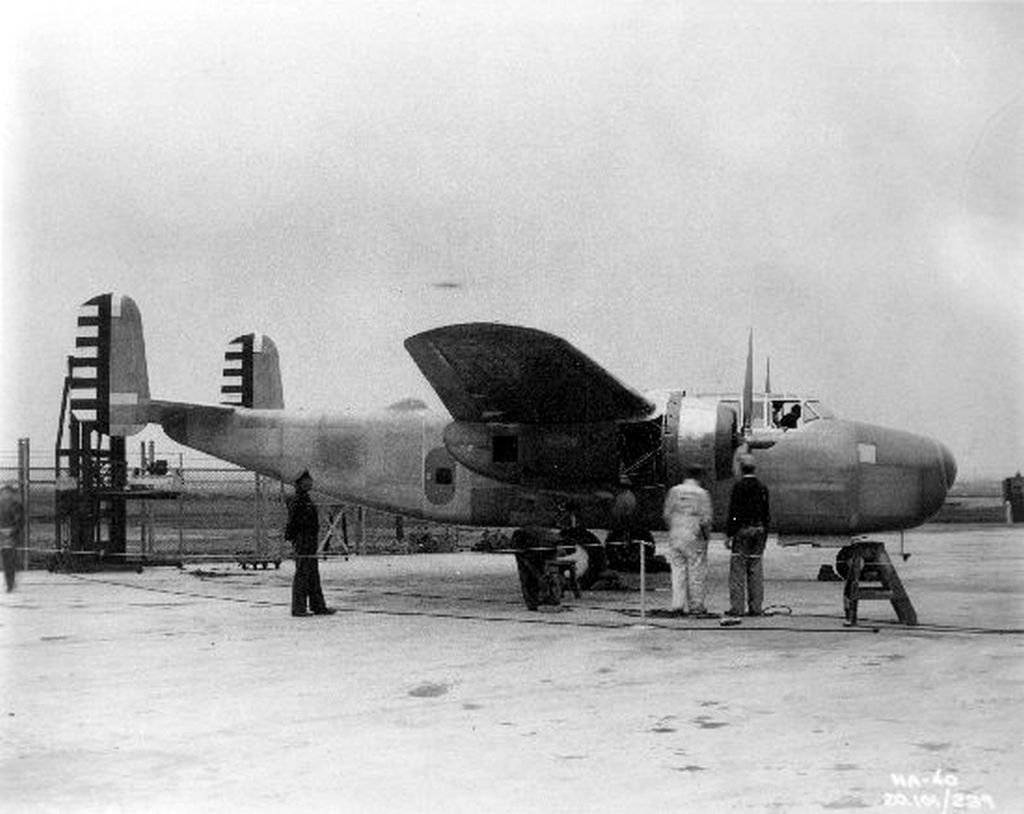
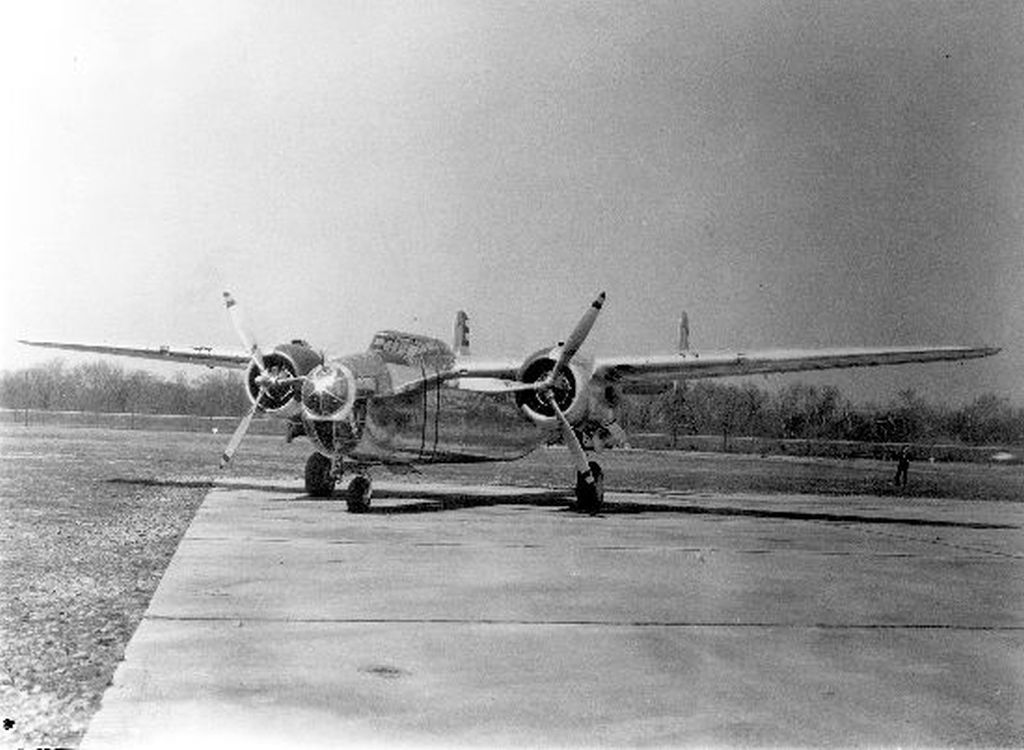
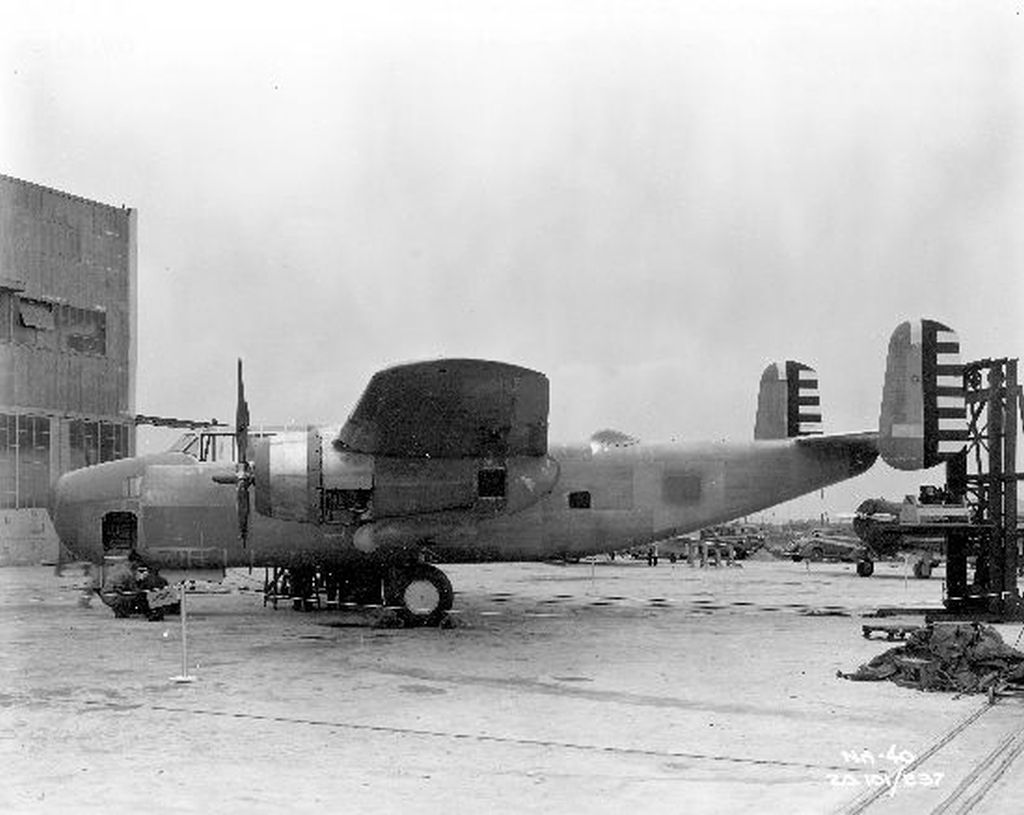

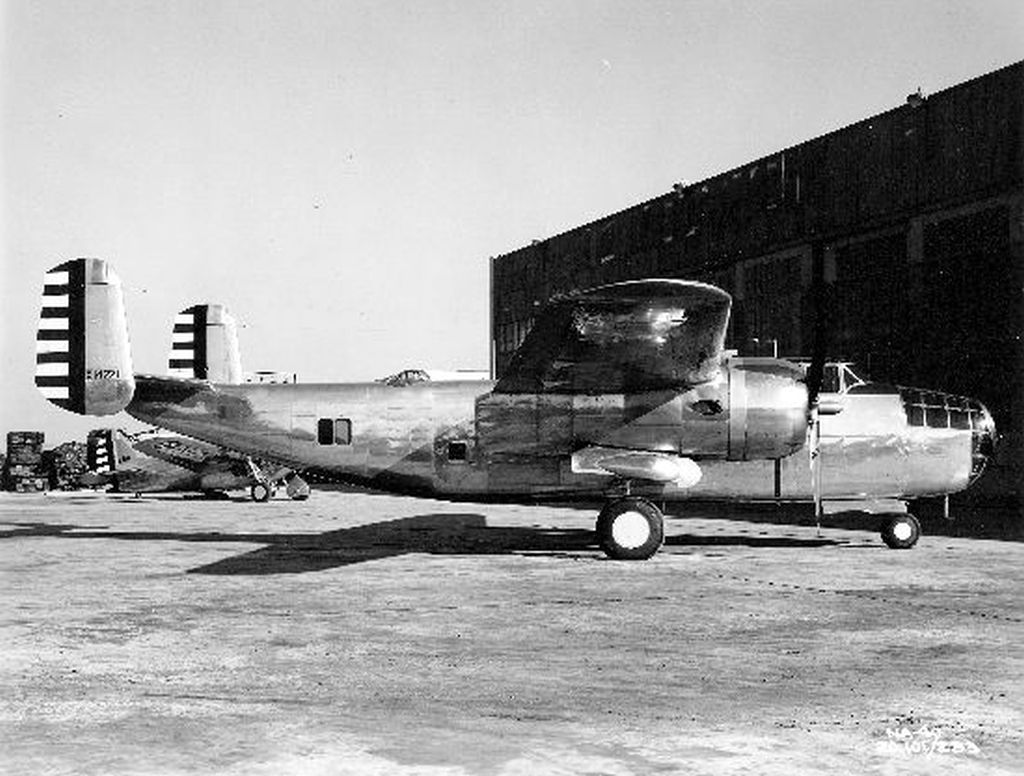
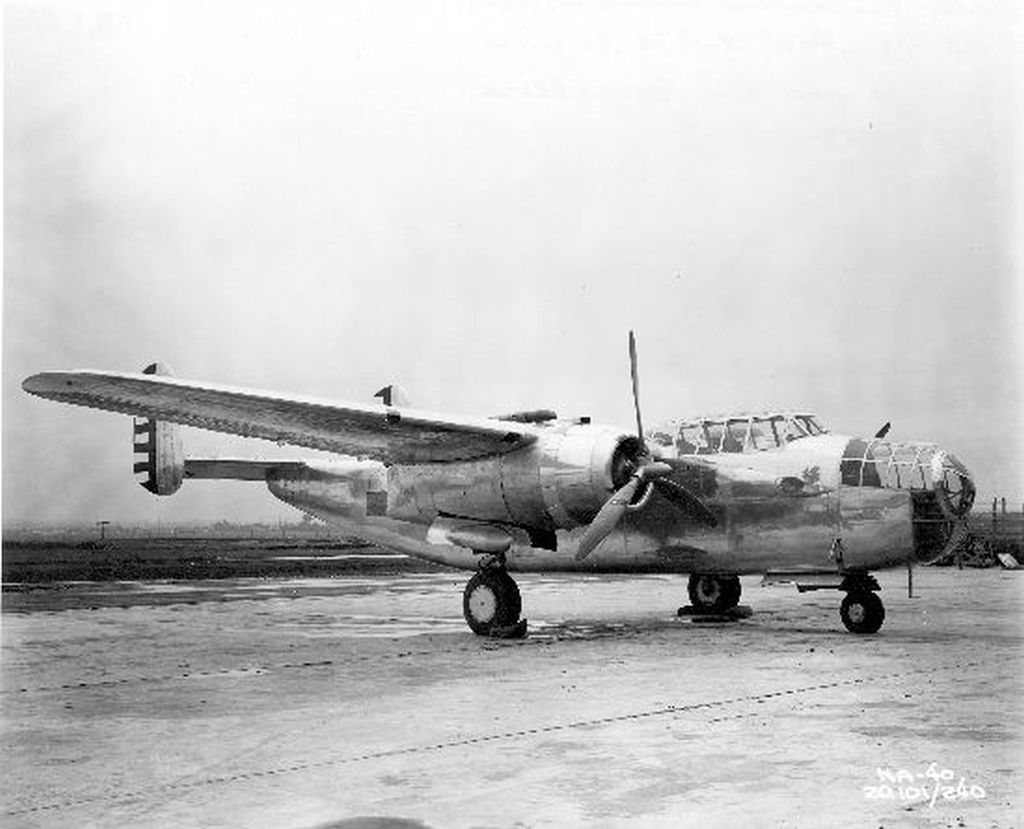
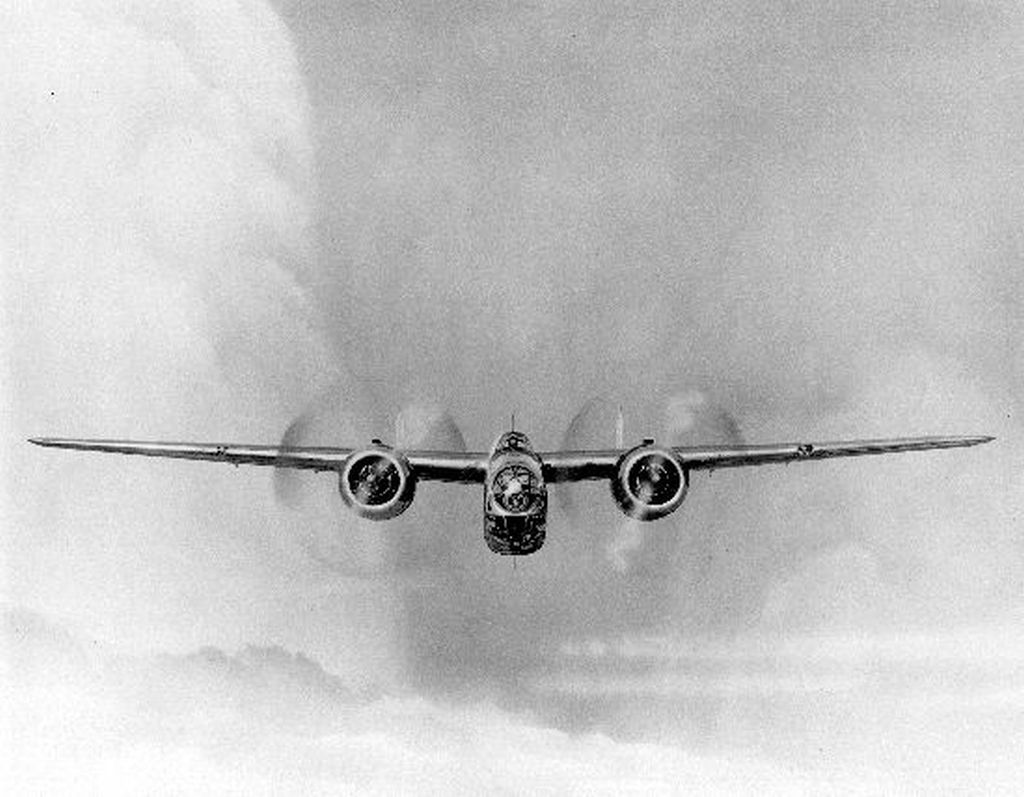
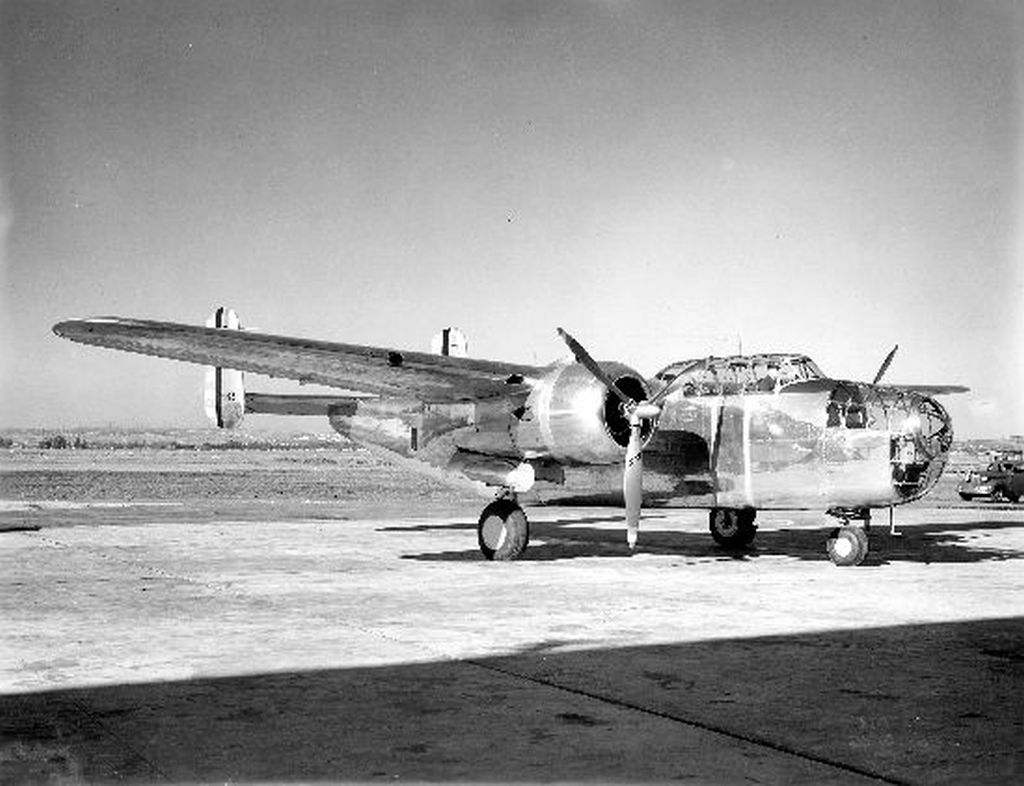
Sorry for the photo quality.
-
 AdminI've always found it interesting that some prototypes like the NA-40 and Boeing 299 had nose turrets while their initial operational versions did not.
AdminI've always found it interesting that some prototypes like the NA-40 and Boeing 299 had nose turrets while their initial operational versions did not.
Post a reply
- Go to Previous topic
- Go to Next topic
- Go to Welcome
- Go to Introduce Yourself
- Go to General Discussion
- Go to Screenshots, Images and Videos
- Go to Off topic
- Go to Works in Progress
- Go to Skinning Tips / Tutorials
- Go to Skin Requests
- Go to IJAAF Library
- Go to Luftwaffe Library
- Go to RAF Library
- Go to USAAF / USN Library
- Go to Misc Library
- Go to The Ops Room
- Go to Made in Germany
- Go to Campaigns and Missions
- Go to Works in Progress
- Go to Juri's Air-Raid Shelter
- Go to Campaigns and Missions
- Go to Works in Progress
- Go to Skinpacks
- Go to External Projects Discussion
- Go to Books & Resources
